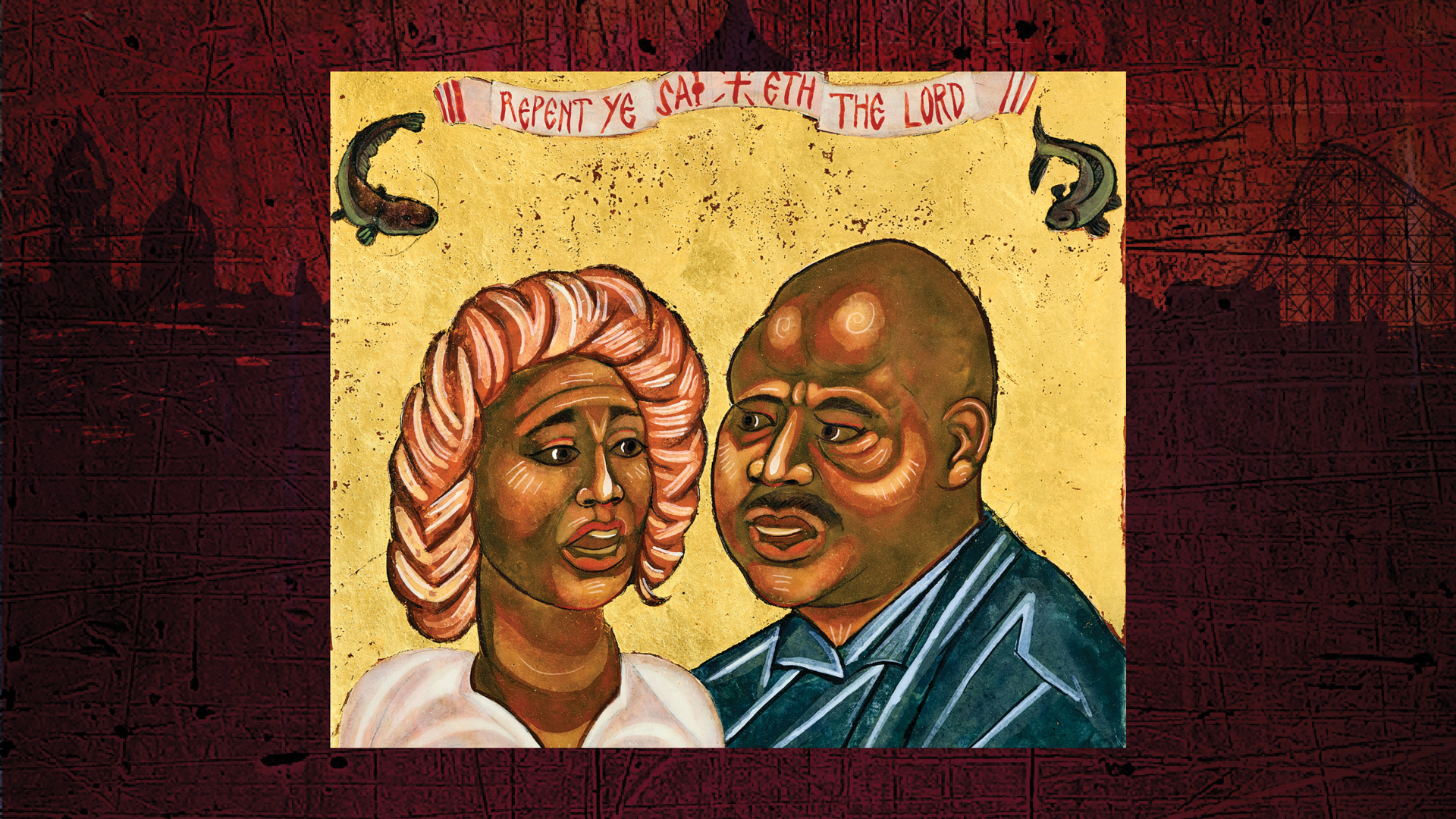The Light We Hold: Maestro Patrick Summers shares a Dozen Thoughts on Houston Grand Opera’s 2025-26 Season
During the American Revolutionary War in the 1770s, a French playwright who had become wealthy from a hit used some of his windfall to aid the French and Spanish who were helping American colonists fight the British. The playwright was Beaumarchais, and his hit play that helped pay for a tiny piece of America’s liberty was The Barber of Seville.
This wasn’t Rossini’s famous opera, of course, which came a quarter-century later, but the revolutionary spirit was in all three of Beaumarchais’s Figaro plays, two of which became more famous as operas: Mozart’s The Marriage of Figaro, which was thought by Napoleon to have ignited the French Revolution—simply because within its final act a servant, Figaro, says “No!” to a landowner, the Count. The world loved the character of Figaro because he was one of the first in which many people could see themselves. And the most beloved of all Figaros is the title character in the brilliant Rossini comedy of manners, The Barber of Seville, which makes a happy and welcome return to HGO next season.
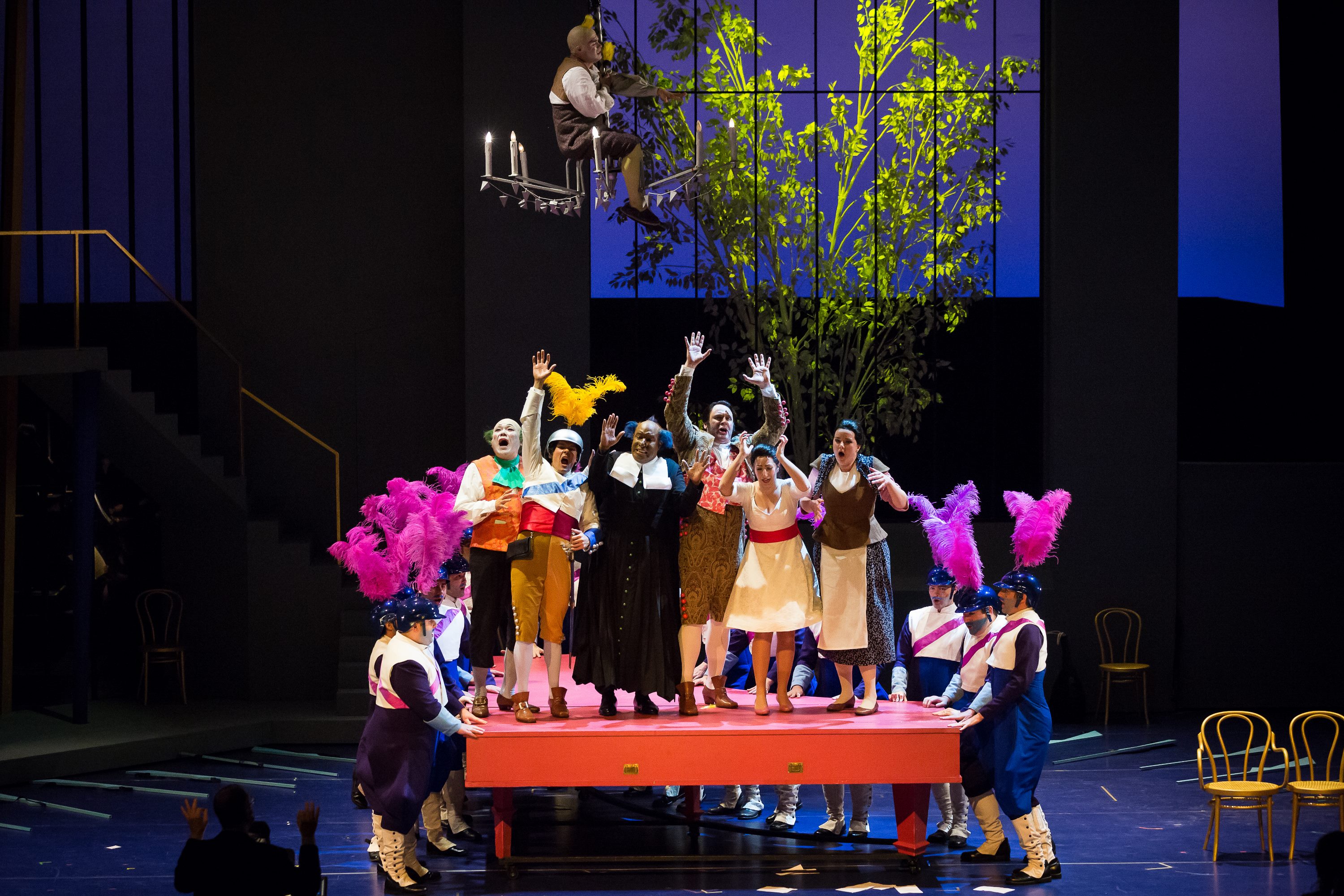
The Gershwins’ Porgy and Bess
Puccini’s Il trittico
Puts and Campbell’s Silent Night
Humperdinck’s Hansel and Gretel
Floyd’s Of Mice and Men
Rossini’s The Barber of Seville
Handel’s Messiah (arranged by Mozart)
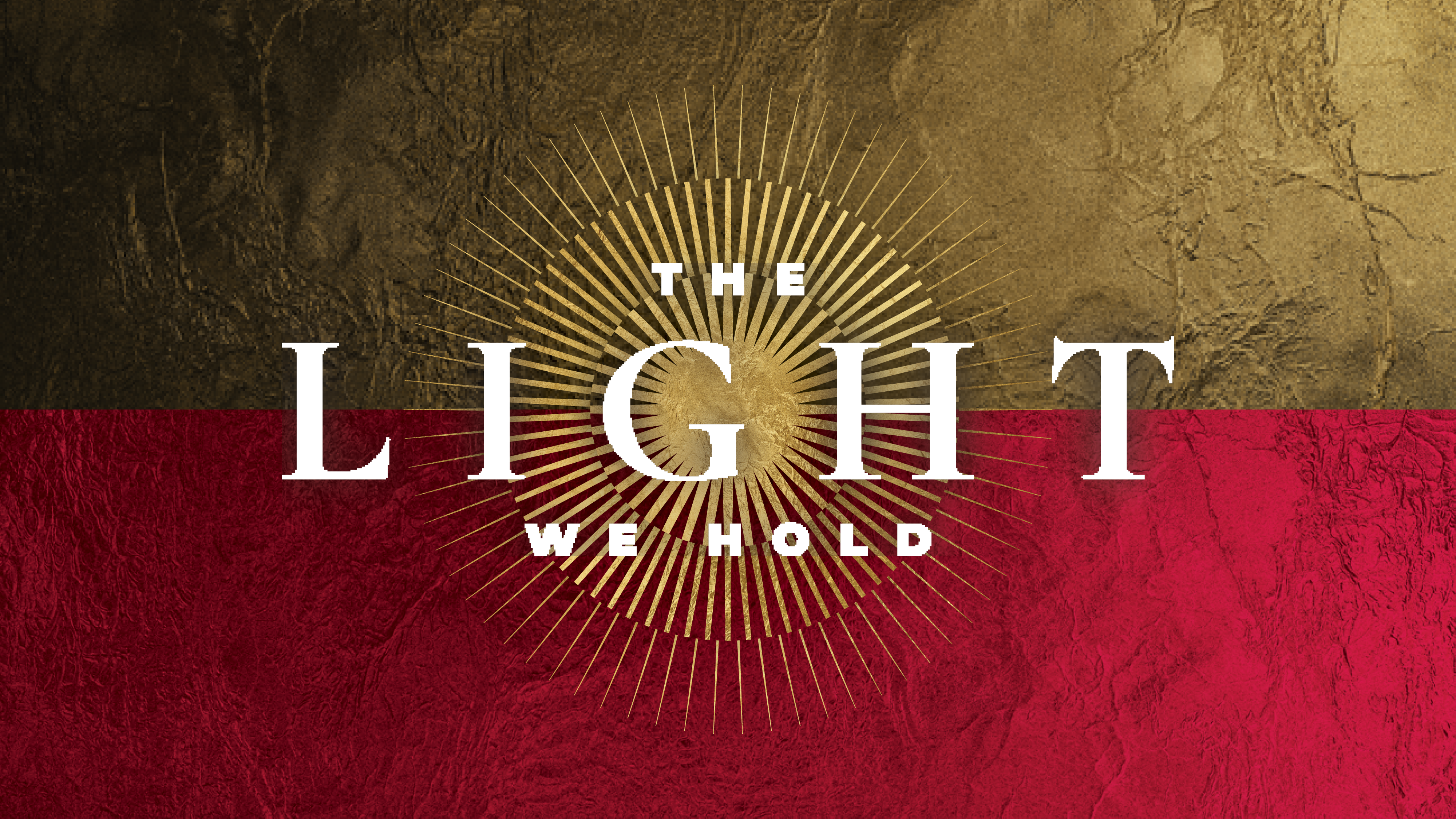
The 2025-26 Houston Grand Opera season is a uniquely American one. Of next season’s seven operas, four have direct ties to the United States. This is illuminating of the cultural shifts of our post-pandemic opera industry. We’re in a curious time in which the art is expansive—there have been more than 300 new operas in the United States in the 21st century—but the artistic industry, in a worrying number of places, is contracting.
This makes it all the more celebratory that for the country’s quarter millennium, the 250th anniversary of the United States, as well as for the centenary of composer Carlisle Floyd (1926-2021), and for the 50th anniversary of the landmark HGO production of Porgy and Bess, and also for the robust health of the company as it enters its 70s—we are producing the largest opera season in the company’s history.
Porgy and Bess, Silent Night, and Of Mice and Men are all obviously American operas as traditionally defined: American subjects by American composers. But Puccini’s Trittico, being an American commission from the Metropolitan Opera in 1918, inspired what is, for me, one of the greatest of all Italian operas. There is nothing else like Trittico in the operatic canon and, given its rarity, this will be a once-in-a-generation chance for Houston Grand Opera subscribers to experience it.
Messiah is a production by a unique American artist, Robert Wilson, without whom we wouldn’t be doing it. Messiah feels America-adjacent for some other reasons, too. Messiah’s musical origins were, like our country’s own, steeped in the 18th-century European Enlightenment. Handel was uniquely international, in that he was a German, trained in Italy, and, despite often writing and speaking in French, became quintessentially British. Mozart, a proud Austrian, was one of the curious searching souls of the world, and his homage to Handel with his re-orchestration of Messiah, something he did over the course of several months in 1789, is one of the great tributes of one composer to another. Few works can be said to be by two major composers; Mozart’s version of the Handel Messiah is one of those few.
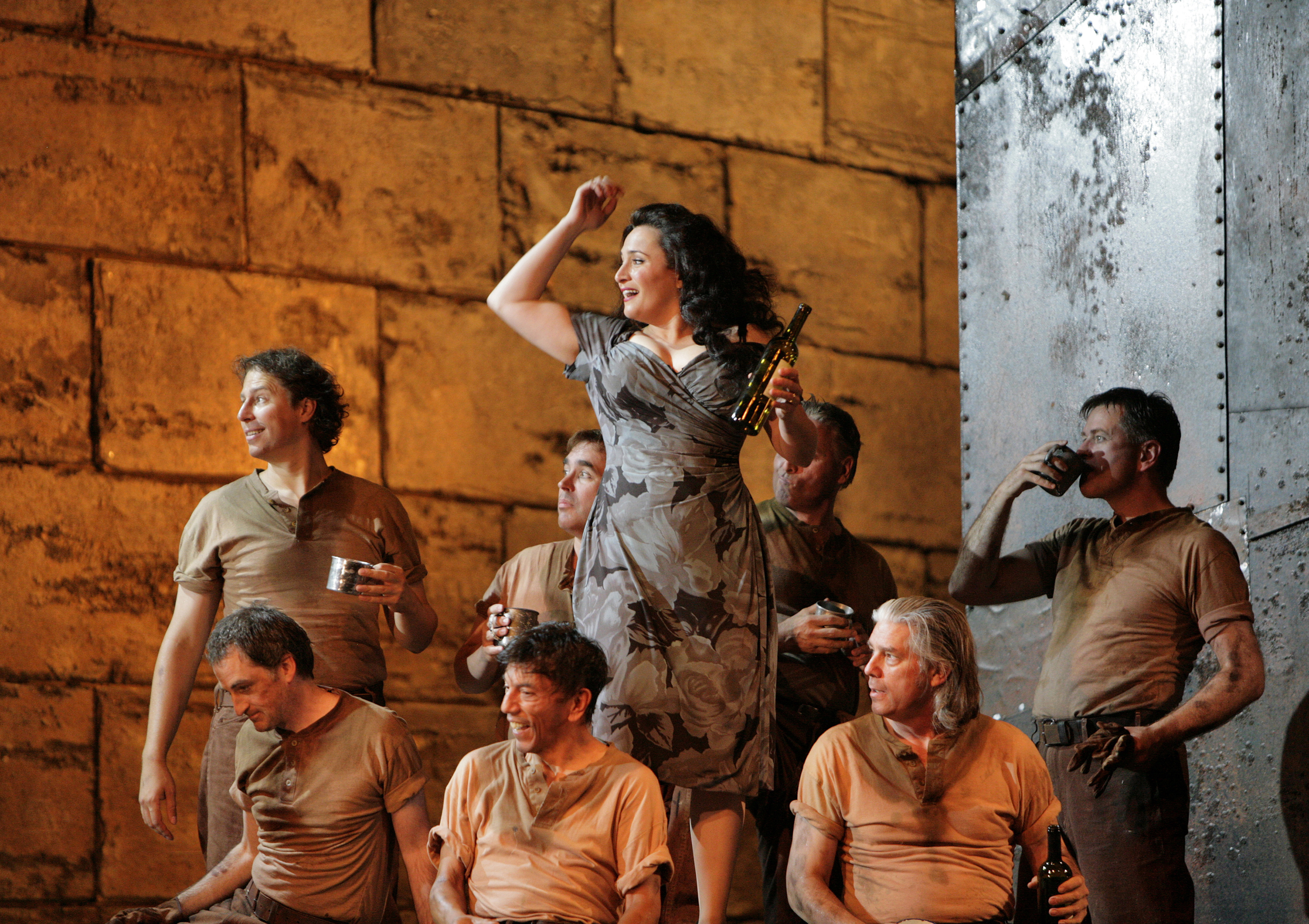
Our immigrant nation has always had a touchy relationship with the older arts of older countries, leaving many to wonder if opera could ever successfully be American. But looking objectively at where opera has landed in the mid-2020s, some major trends cannot and should not be ignored:
As is well known, opera’s origins were Italian: opera was a remnant of the final years of the Florentine and Venetian empires. Opera then spread for several centuries across Europe into many national traditions, especially—but not exclusively—to France, Germany, Bohemia, and Russia. Occasionally, but rarely, opera would visit the Americas, though always as a devoutly European guest.
But the world wars of the early 20th century, besides all of their tragic geopolitical consequences, severed the long line of creativity in opera, and several shifts began. Opera became, just like so many of our ancestors, an immigrant to the Americas, and the creative impulses began to take things from the Old World and Americanize them.
Nearly a century ago, in 1927, a seemingly standard musical that was really a hybrid opera, Jerome Kern and Oscar Hammerstein II’s Show Boat, melded all kinds of traditions that had floated around the country for a half-century: operetta, Reconstruction-era literature, Prairie philosophy, the Harlem Renaissance, the American musical, and the huge American vaudeville circuit. The stirrings of American opera were bubbling.
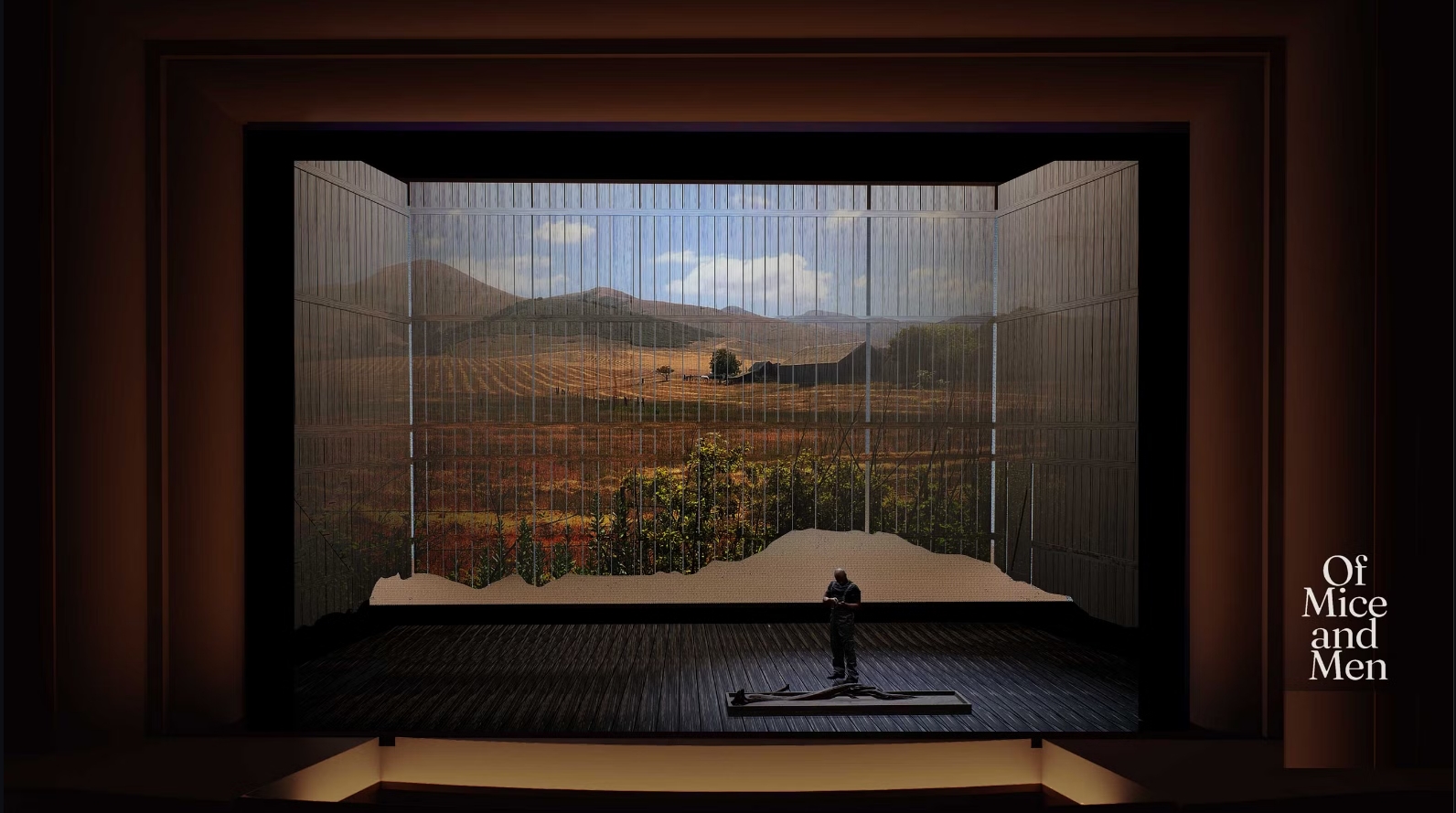
Just eight years after Show Boat, the work it made possible was heard for the first time, George Gershwin’s Porgy and Bess, which returns to open our 2025-26 season. Houston Grand Opera and Porgy and Bess are forever linked because of the company’s 1976 production of the opera, which was the moment in the opera’s history that opened it to reappraisal as a serious work worthy of opera’s European legacy.
Porgy and Bess had been performed many times between its 1935 opening on Broadway and HGO’s 1976 production, but never with such completion, artistry, and so ensouled with Gershwin’s original intentions. A decade later, in 1985, the opera company for which it was originally intended, the Metropolitan Opera, finally presented the opera, a half-century after it was composed.
So, while HGO was the company that made Porgy and Bess famous, it was also Porgy and Bess that put Houston Grand Opera on the map. Neither Gershwin’s opera nor Houston’s opera company would be the same in 2025 without each other.
Porgy and Bess far exceeded the cultural speed limits of the 1930s, which was a bigger part of the opera’s early story than the opera itself. We are now a century from the publication of DuBose Heyward’s original novel, Porgy, the work of a white man observing a community he could obviously never fully understand. But it was—and is—an attempt to empathically understand the long struggles of Reconstruction, Plessy vs. Ferguson, and so many other Jim Crow-era realities that made works like Show Boat and Porgy and Bess so profoundly necessary. One thing is certain: without Show Boat, there would have been no Porgy and Bess.
Yes, a portion of these works remains culturally retrograde, but not more so than Carmen or La traviata, two operas whose milieus disappeared generations ago, putting their operatic beauty at a safe distance. Porgy and Bess remains what it has always been: a cultural lodestar, a work through which we see ourselves and the country’s history, good and bad. Part of what we see is growth and progress, and it also shows us how far we have yet to go. For a single opera to be able to do all of that, it must be great indeed.
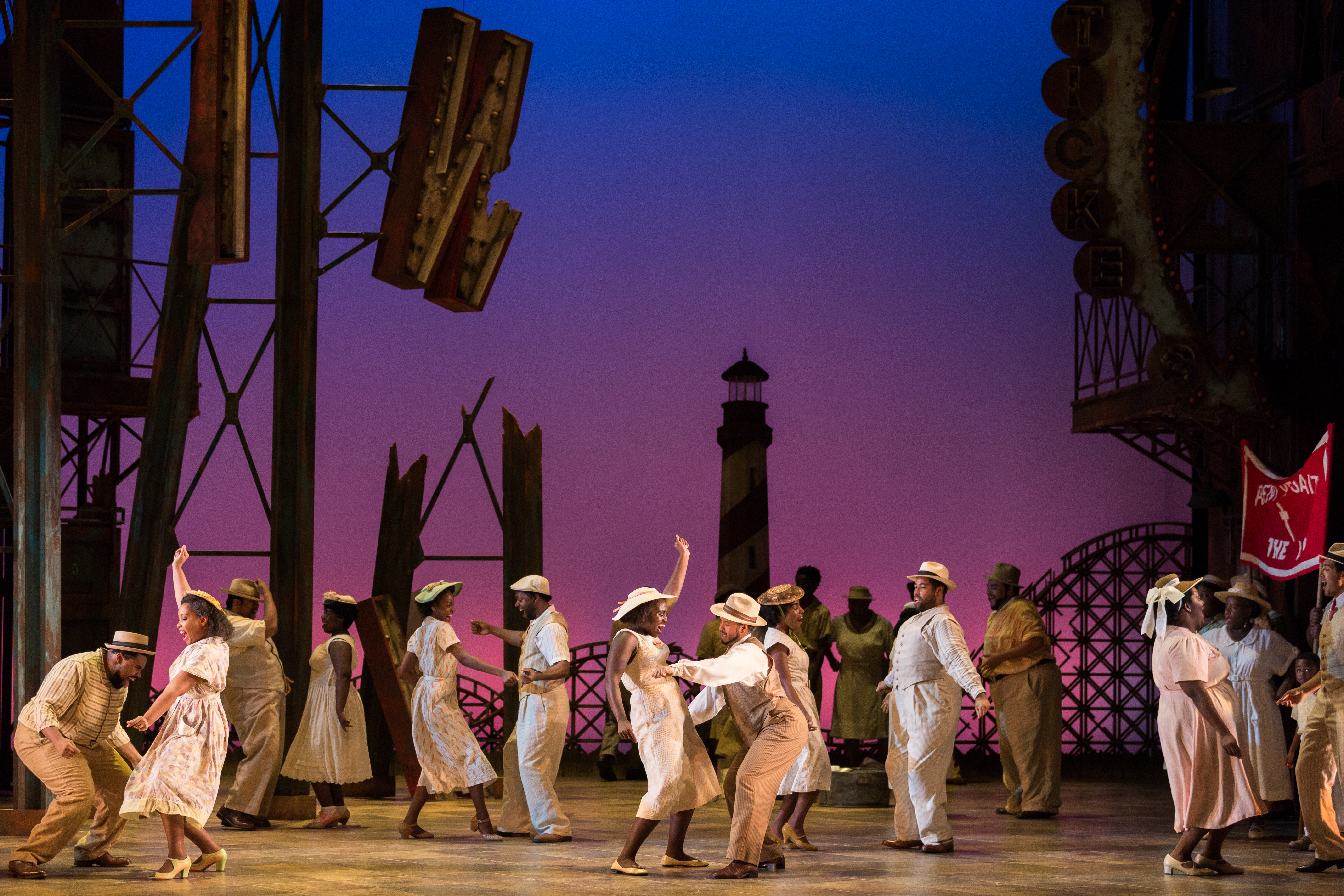
This is an unusual opera season in one respect: it has no operas by the titans of the form, Verdi or Wagner, and it is a rare opera season anywhere that doesn’t include them. But their influence is felt by their absence, and it feels adventurous to give them a year off.
Engelbert Humperdinck, the composer of the sublime Hansel and Gretel, was identified early on as one of Wagner’s successors, and he was Wagner’s musical assistant in the first Bayreuth Festivals. He was a magnificent composer, and if there is a more singularly beautiful opera than Hansel and Gretel, I don’t know what it is. Humperdinck was a lighter-hearted fellow than Wagner. He called the Flower Maidens in Parsifal’s second act “The Merry Wives of Klingsor,” providing some much-needed levity to the very serious Bayreuth crowd.
If you’re of a certain age, the name Engelbert Humperdinck sounds familiar for a different reason. Humperdinck’s name was usurped by a pop singer who was born 15 years after he died, Arnold Dorsey, whose manager thought he should change his forgettable name into something “funny,” and he’d heard Humperdinck’s name on the radio. It worked: the pop singer had two big hits, “Release Me” and “After the Lovin’,” and probably made a great deal more money than the composer of Hansel and Gretel ever saw.
Hansel and Gretel premiered in Weimar shortly before Christmas of 1893, which seems to have permanently lodged it as Christmas fare. This is a bit odd. An opera about a cannibalistic witch who is killed by two children she is trying to cook is not exactly candy canes and Santa Claus, but traditions stubbornly cling. We will perform it after the holidays, in January, and it feels just right to start a new year with this wonderfully grand opera, performed on the scale at which it was meant to be heard.
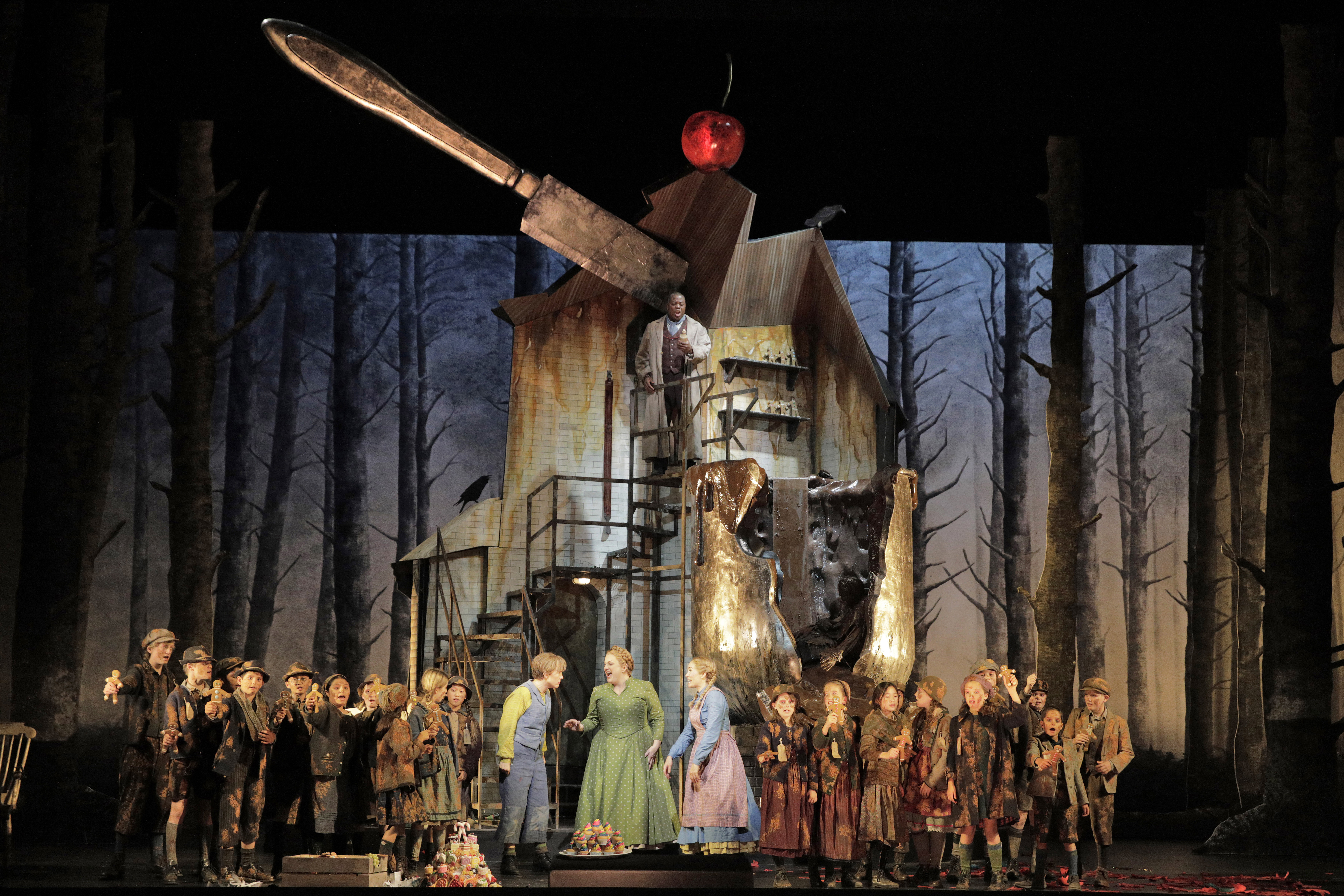
The single project most exciting for me next season is a work I have tried for a quarter-century to program at HGO: Giacomo Puccini’s Il trittico. The three one-act operas that comprise the work are Il tabarro (The Cloak), Suor Angelica (Sister Angelica) and Gianni Schicchi.
Puccini, who had already composed three of the most popular operas in history, La bohème, Tosca, and Madame Butterfly, could not conceive of the scale of tragic young deaths in WWI. Indeed, no one could. So he conceived Trittico with a powerful unifying theme: the humanizing effect of a single death on those left living. In English, trittico would be translated as “triptych,” as in the three-part altarpiece paintings of the Middle Ages or in the three books of Dante’s Divine Comedy—which are Hell (Il tabarro), Purgatory (Suor Angelica), and Paradise (Gianni Schicchi—the laughter is paradise!).
The orchestral and vocal palette of Il trittico is inexhaustible, moving from darkness to light over the long course of the work. In Gianni Schicchi, Puccini virtually invented the timing and feel of early Hollywood comedies, and you will never find a funnier opera. Gianni Schicchi isn’t just “opera funny”—it is a howler. It also contains one of the most famous tunes ever composed: “O mio babbino caro”—more on that in a moment.
Puccini’s unique ability to connect with audiences across all cultures, and to touch the heart with great musical adventures like Il trittico or his unfinished Turandot was thought by some to have died with him. But did it? Within weeks of his passing in 1924, far away from Europe in what was then a dry and exotic emptiness, four entities opened their doors in southern California: Warner Bros., Columbia, RKO, and Metro-Goldwyn-Mayer, beginning another big cultural shift.
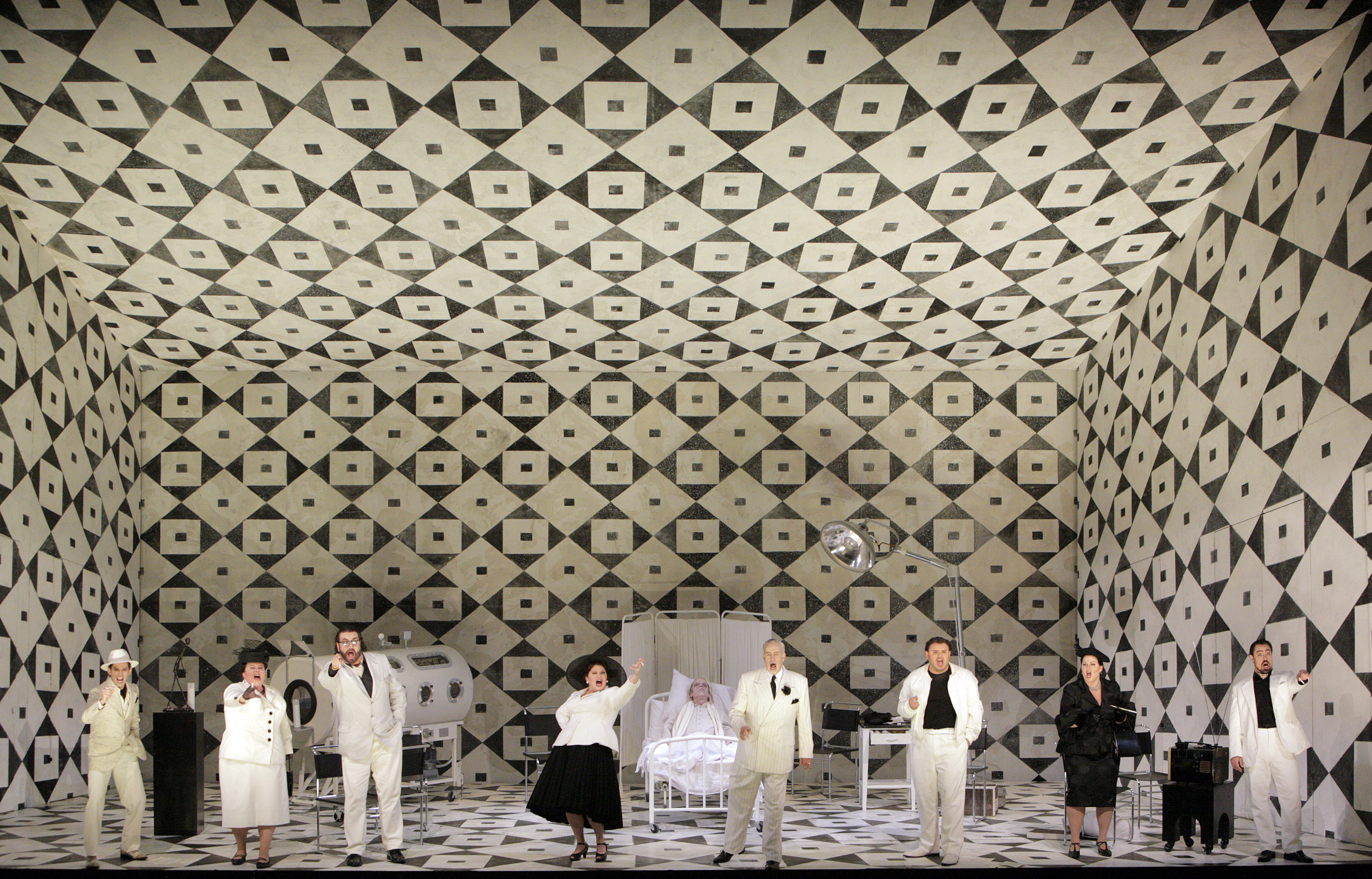
No opera company had a longer relationship with a major composer than the half-century of association Carlisle Floyd had with Houston Grand Opera. His influence on the company was profound and lasting, both as a composer and a librettist. There wasn’t a single commission he didn’t positively influence, and the single thing at HGO of which he was most proud was co-founding the Butler Studio with David Gockley. It is especially fitting, then, that we celebrate Carlisle’s centenary with a production of his masterpiece, Of Mice and Men, in the intimacy of our Cullen Theater.
Like all great titles, Of Mice and Men has multiple meanings. The title comes from a line of Robert Burns’ poem, “To a Mouse,” which itself was inspired by Burns wandering into a mouse nest with a plow. John Steinbeck took the image still further into the poverty-stricken immigrant workers of Salinas Valley on the Central California coast where he grew up. He created n highly symbolic story of two workers, Lennie and George, whose own lives get turned up by a metaphorical plow. They are on the run. George is trying to protect his friend Lennie from harm because Lennie has caused harm without having any idea why or how: Lennie is a gentle giant who doesn’t know his own strength, and he becomes a danger to himself. The allegories of power in this opera are profound, and there are few moments in art as overwhelming and as cathartic as this Of Mice and Men’s shattering final moments.
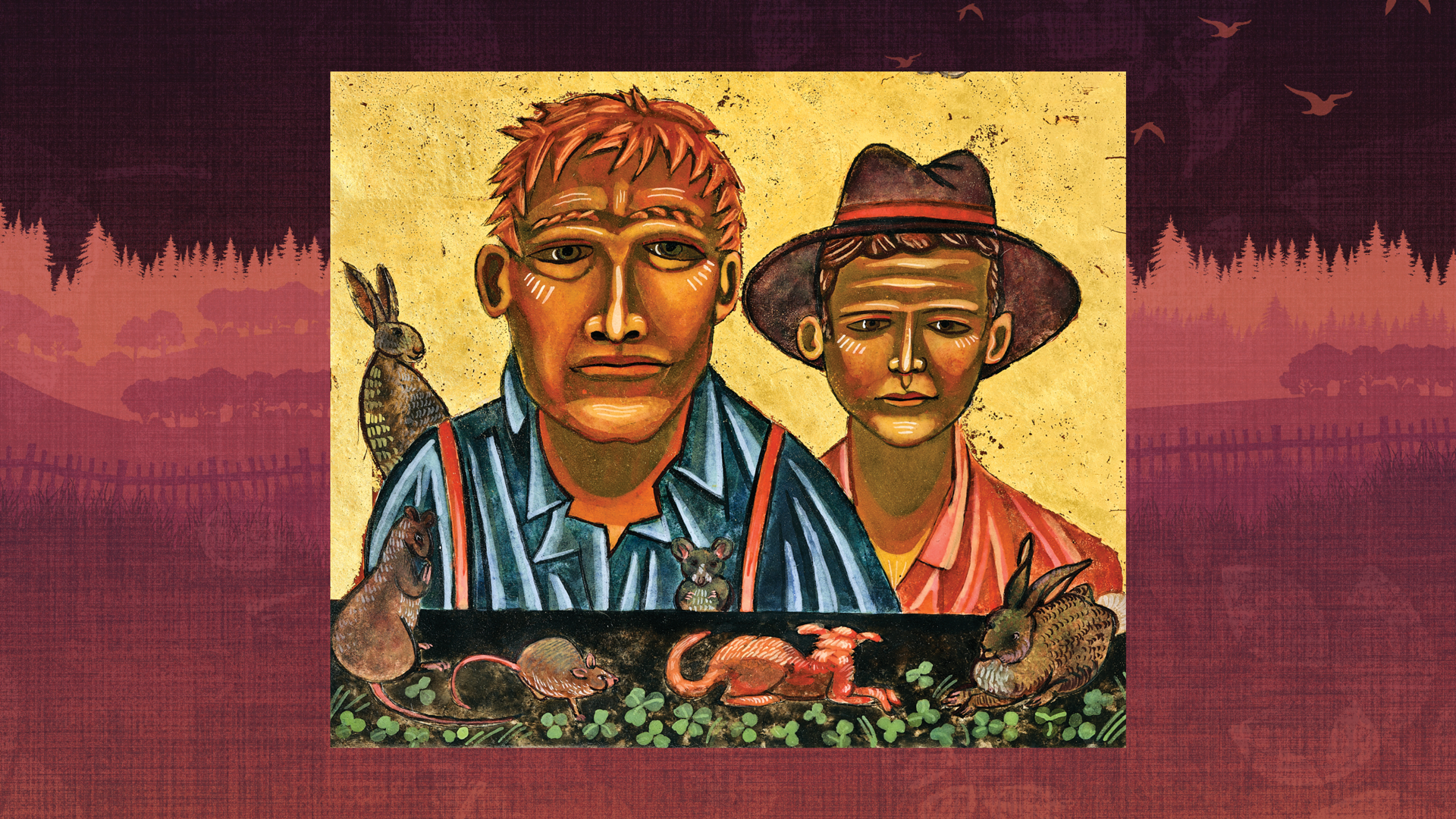
The American composer Kevin Puts’s first opera, Silent Night, is one of the most successful operas of our young century. The opera is based on a real event that lasted only a few hours: the Christmas Eve truce of WWI in the trenches along the Western Front. In the first Christmas of the war, in 1914, the warring parties shared their Christmas songs and traditions, playing soccer and sharing pictures of their girlfriends, wives, and children. The opera is based closely on the 2005 film Joyeux Noël by Christian Carion, and Mark Campbell’s libretto, like the film, is in German, French, and English.
The story is the based on the German tenor Walter Kirchhoff (1879-1951), who traveled to the Western Front to sing as a morale-booster. That Christmas Eve, French troops cheered his singing, and he climbed into no man’s land to see who was praising him, beginning the famous truce.
Kevin’s remarkable score for Silent Night is poly-everything: poly-tonal, poly-rhythmic, poly-dramatic, and lushly neo-romantic. It is an opera Charles Ives might have loved to compose, filled with passionate longings and ardent reflections. And beyond everything else, Silent Night is impossibly beautiful and moving; I have yet to speak to anyone who has ever experienced this opera who did not have a powerful reaction to it.
The one piece of music you won’t hear in this opera is the German Christmas carol “Silent Night,” and its absence is both purposeful and profound: faced with the task in front them, the winning of a war— and having met their enemy and realized that they were all in the same predicament—there could be no silence of mind, heart, or spirit. The officers were naturally against the truce, knowing how difficult it is to keep control of what has been humanized. So, the actual stille Nacht, as “silent night” is intoned in German, was decades away from that cold muddy Christmas Eve, when a bunch of kids did their best to fulfill their mission, which was no less than the saving of the world as they knew it.
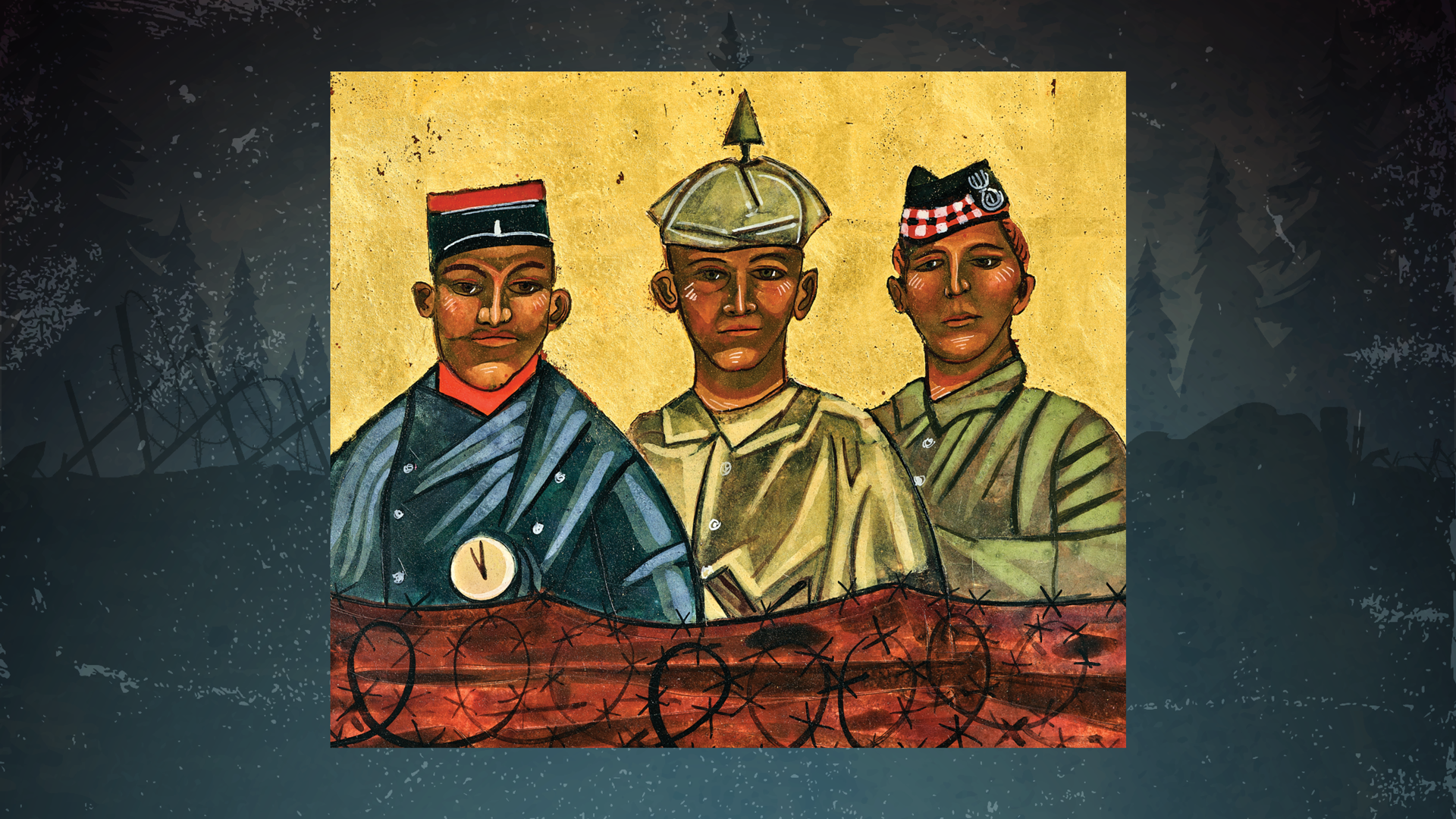
One of the singular works of Western art, famous from the moment it was heard nearly 300 years ago, is Handel’s Messiah—but is it an opera? Messiah famously has no characters; the four soloists are simply marked as their voice types. Mozart first heard Messiah in London as an eight-year-old, in 1764, only five years after Handel’s death, and he orchestrated Messiah near the end of his life, in 1789, as an homage to the great master. What might Mozart, the great opera composer, have thought of this extraordinary Robert Wilson reimagining of the Handel work he reimagined?
Robert Wilson’s production of Messiah is a piece of living abstract art filled with provocative images. There is no traditional narrative, which means it is about both everything and nothing, depending on your starting place. The experience of Messiah is joyous, whimsical, moving, and provocative. The production contains no traditional religious imagery at all, yet it is an experience of such childlike wonder and joy, filled with movement and light and constant reminders of the earth’s elements.
Bob’s work (he is Bob to all of us who adore him) is considerably contrary to the trends of American theater today. Training in acting now is almost universally about realism. Bob is seeking a disciplined opposite to realism: he celebrates falsity and artifice, believing that formality brings an audience closer to their own emotions and all of us closer to music. Nothing in a Wilson production is naturalistic.
Bob is fond of saying, “Light is the most important actor on stage,” and this is borne out in his body of work. In a Wilson production, one is reminded of James Turrell’s Light and Space movement, and in Wilson rehearsals I sometimes find myself transported to that enigmatic spot underneath Main Street at the Museum of Fine Arts, Houston: The Light Inside, the gorgeous tunnel designed by Turrell in which a visitor is pinioned between light and space, unmoored and grounded all at once. One feels all of these things in Wilson’s Messiah production.
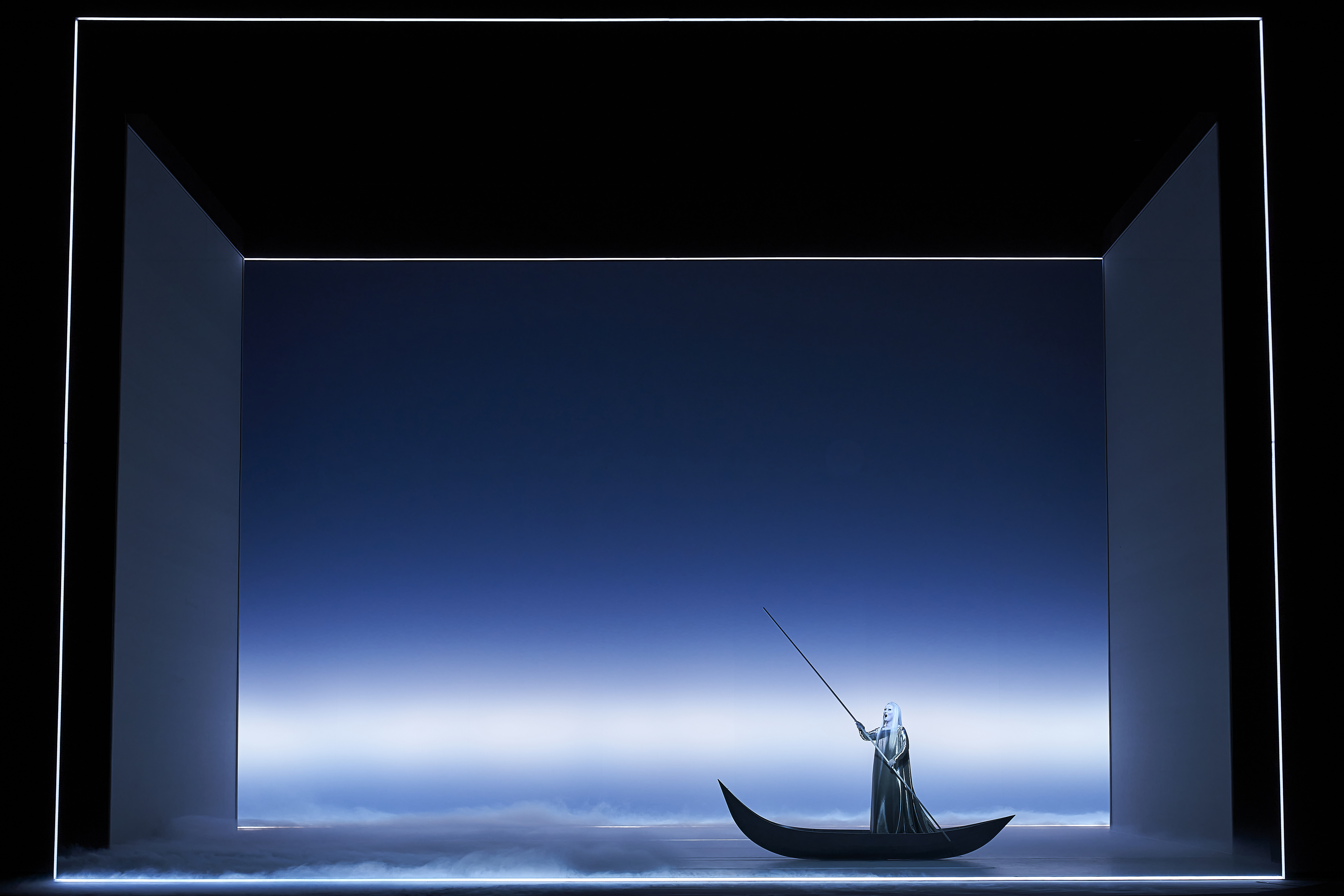
2025-26 will be my final season as Artistic and Music Director of Houston Grand Opera, quite a long distance from my first conversations with David Gockley over 30 years ago and my debut season of 1998-99, when I conducted my debut Traviata. I have been involved in the production of just over 200 operas, totaling about 1,000 performances, approximately a third of which I have conducted. There will be time for reflection next season and, I hope, time for me to express my gratitude for the thousands of artists with whom I’ve worked, the extraordinary donor community in Houston, the work of my colleagues in the company who are without peer, and to think about the small part we’ve all played in opera’s future.
That my final work as will be by both of my favorite composers, Handel and Mozart—in this provocative and moving production of Messiah—is of enormous meaning to me. That my long tenure, too, stretches from David Gockley, who brought me to Houston, to Khori Dastoor, who has invited me to take on a new role as Music Director Emeritus, is also a touching honor.
There will also be ample time in the coming months to share with you the vast artistry that is assembling in Houston to deliver this epic season. My fellow conductors, James Gaffigan, Andreas Ottensamer, Gemma New, Kensho Watanabe, and Ben Manis, represent a marvelous emerging generation of vital artists. To talk about each singer would require turning this brief essay into a book, but you will hear about them all, I promise! Suffice to say that we will be giving voice to these great operas with the finest artists in the world.
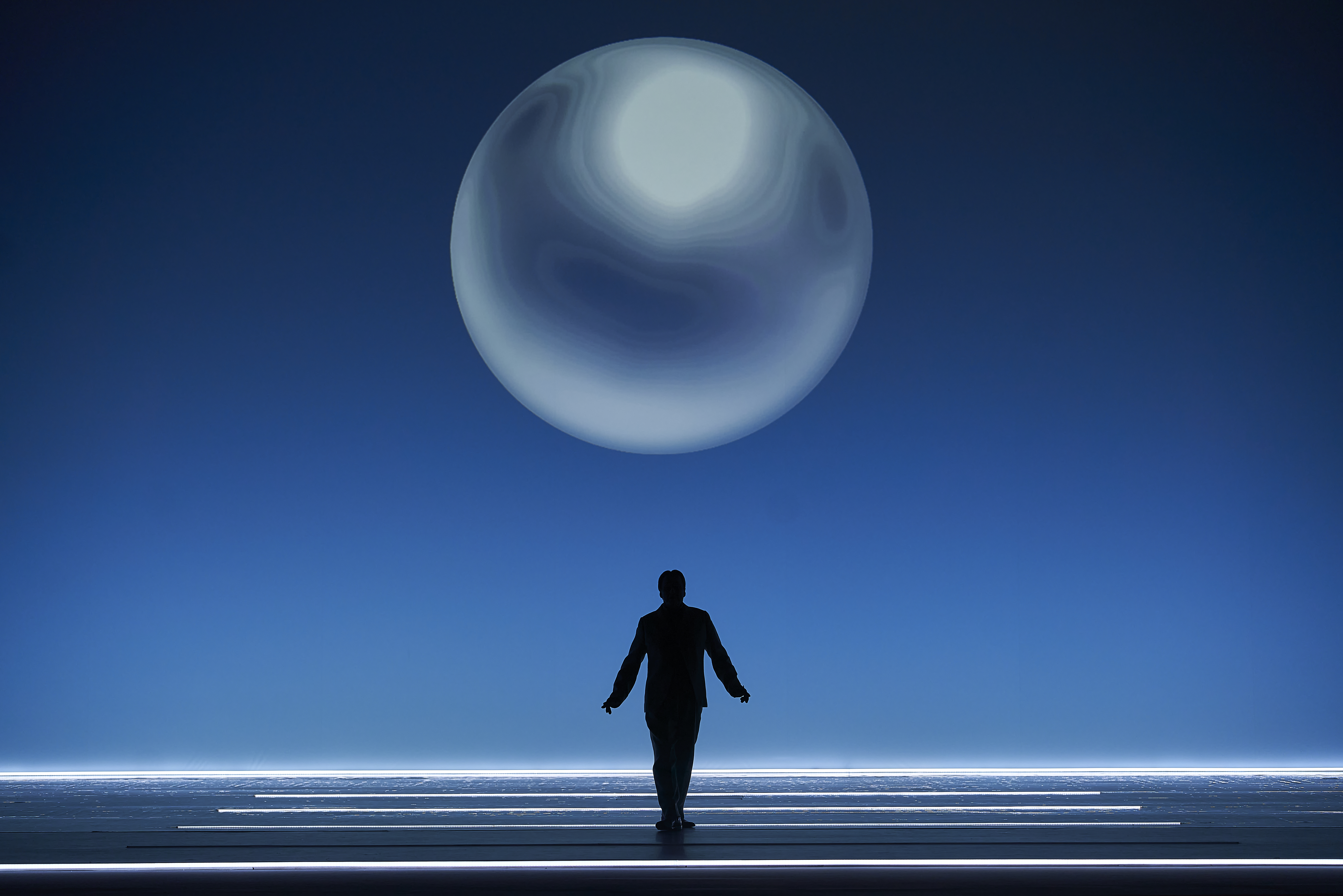
When I contemplate next season, the word that continually arises is melody. It isn’t simply that next season is an especially tuneful one—though it is. It suggests everything that the idea of melody represents.
The great melodies of next season, like the soulful bagpipe melody in Silent Night or the glorious “Dolce nodo” tune in the balcony trio of The Barber of Seville (I could hear that every single hour of every day!)—they do what great melodies do: they lead us on a journey. Great melodies represent the future, which is why they live with us so vividly once we hear them. I think of Handel’s buoyant and sensuous melodies found all over Messiah, or the great wordless chorus of angels soaring over the sleeping children in Hansel and Gretel, and I realize yet again that once we love a melody, it loves us back for our whole lives, as though, at some magical point, it begins to hear us.
Puccini was one of history’s great tunesmiths, and besides the already mentioned “O mio babbino caro,” the Trittico is one of the most tuneful experiences in opera, and the range, ambition, and wealth of his melodies is extraordinary in this work.
The great melody of next season—surely one of the greatest any of us will ever hear—is “Bess, you is my woman now” from Porgy and Bess, which mysteriously manages to be much more than simply a good tune. It contains within it all of our country’s complex history—I don’t know how, but it does. On its surface, it is a seductive “love” melody, but it has a deep ambiguous sadness as well, and how profoundly it longs for some unexpressed thing, as though it is begging the world around it to be better than it is.
Near the end of Porgy and Bess, this melody returns, solely in the orchestra this time. It is wistful, searching, and strangely distant. We wonder for a moment what we are hearing. For a brief time, the audience knows something Porgy does not, that Bess is gone—but as he searches for her, interjecting small phrases over that glorious tune, we are swept into his hopefulness. It is this moment which, I believe, lifts Porgy and Bess to transcendence, and us along with it.
That’s what a melody is: hope. That’s what a season is, too. Enjoy.
